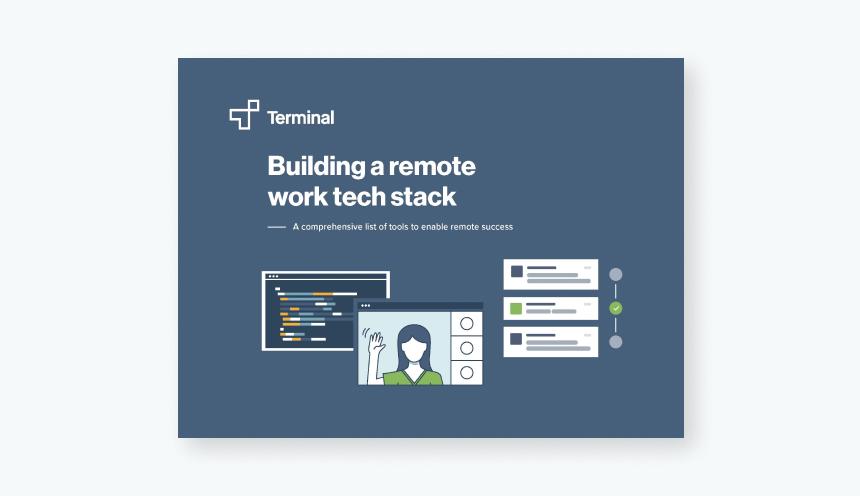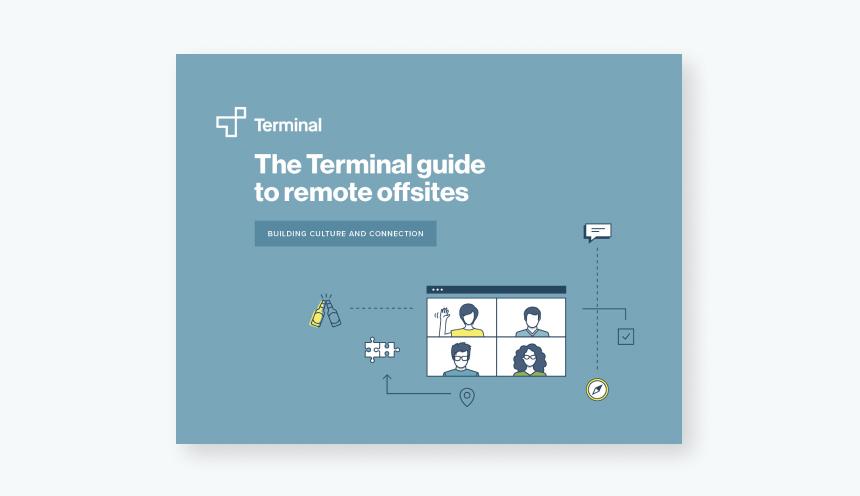
Remote how-to’s | Blog Post
How To Prevent & Handle Remote Work Burnout
Wes Mitchell-Lewis
Share this post
Many remote managers worry their direct reports will work too little in an ‘unsupervised’ setting. But data shows managers should be more worried about employees working too much. In fact, 63% of leaders say their remote work plans address productivity; however, less than a third of plans address employee burnout (21%) or loneliness (32%).
Your most valued employees are probably the least likely to raise their hand when they feel overwhelmed, so be on the lookout for signs of burnout to keep your team fresh, happy, and motivated.
Burnout is one of the biggest threats to employees who work remotely. 62% of remote tech workers experience symptoms of remote work burnout, and the risk for burnout is higher for remote employees compared to their in-office counterparts. Companies that build a culture around work-life balance will give their employees plenty of reasons to stay, but perhaps more importantly, few reasons to leave.
Make remote employees feel seen. Remote workers know they’re not at HQ if you even have an HQ. It does go a long way, however, to give them something that’s special to show them they’re not forgotten.
Woody Anderson, CTO at Zumper
Below are a few great steps, that you as a leader, can follow to better recognize and combat remote work burnout and loneliness at your company.
Be Proactive in Fighting Burnout
For employees, broaching the topic of burnout with a manager can be daunting. As a result, many employees simply avoid bringing it up. So be proactive, be direct, and be consistent. In 1:1 meetings, start by asking about the softer side of work. How are they feeling? Are they motivated? Do they dread certain aspects of their job? Remember – employees will be slow to admit they’re overworked, so phrasing is everything.
Did you know that 22% of remote workers say that their biggest struggle is unplugging when their workday is done? And that an additional 7% say their biggest challenge is taking vacation time?
Learn the Signs of Remote Work Burnout
The signs of burnout can be subtle, but once you learn to recognize them, they’re undeniable. Change in employee behavior is the biggest indicator of burnout which combines with an inability to concentrate, recurring sick day requests, and lack of motivation.
Quiet quitting is becoming an all too common term today and is detrimental to your team’s productivity and overall moral. When employees quiet quit, there will be issues that arise with a product and slip through the cracks, affecting performance and overall customer experience.
Watch out for self-deprecating jokes about depression, hopelessness, or being overworked as well. There’s often more truth in these types of comments than you may realize.
Lead with Compassion
Working remotely can lead to a lot of stress. It can be isolating at times, especially when coupled with the pressures of caring for children or other family members at home. A little acknowledgment goes a long way to make sure they feel appreciated. This can come in as simple a form as validating an employee’s contributions to the team, showing support and understanding when an employee comes to you with a problem and take time to consider ideas before making a decision.
Establish Work-Life Balance
Employees often struggle to turn off when they’re working out of their homes. Workdays don’t have a clear endpoint as they do at an office, so make sure engineers set healthy boundaries around their work hours. Create guidelines around not using email/Slack after hours. If you work after hours, then your employees will feel obligated to do so as well. Similarly, if managers rarely take vacations, their employees may fear that taking time off will reflect on their work ethic.
Lead by example – When you set guidelines for working hours, stick to them yourself. It benefits your employees, and hey, it benefits you too!
Setting aside a few minutes for socializing at the beginning of meetings can act as a pressure release valve during the day as well. Paying for a coworking space for your employees can also be helpful in drawing a boundary between work and life, help with feelings of isolation and boost collaboration.
Set aside some time to socialize. Giving employees a chance to socialize in meetings can act as a pressure-release valve. It can also help with feelings of isolation and boost camaraderie
among your teams, boosting collaboration. But recognize that socialization may not be what every employee needs – try to cater to individual needs when possible.
Remote work burnout is a real problem that must be addressed at every level of every company. Ensuring there is a plan in place for every team can help triage when these issues arise and employees need to take time off or leave the company. But the real goal is to not need to triage anything because you were proactive with your approach regarding burnout from the beginning and you have methods in place to minimize the effects burnout at your workplace.
We hope you were able to learn today! Keep exploring the rest of Terminal’s content offerings and if you are interested in learning more about how we can help you accomplish your growth goals, please


